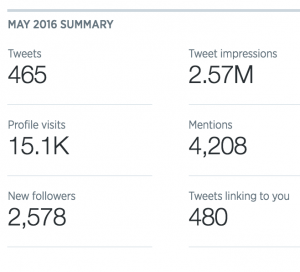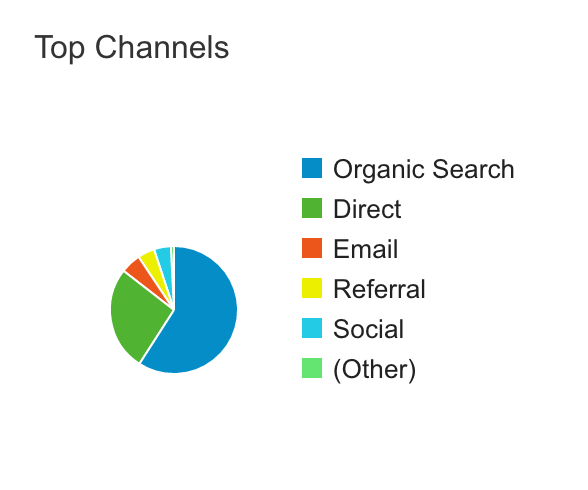If you’re visiting this article before or after sharing it on a social channel, then may I offer you a warm welcome to an increasingly exclusive club. For you are just one of the 41% of people who not only shared the article but actually read it too.
In news that will embolden some, depress others and possibly surprise nobody, a new study by computer scientists at Columbia University and the French National Institute reveals that 59% of links shared on social media have never actually been clicked.
As the Washington Post put it this weekend in one of their best headlines ever – 6 in 10 of you will share this link without reading it, a new, depressing study says.
Back in 2014, it was estimated that social media referral was responsible for 30% of total visits to websites. However according to the research published by HAL (yes, a group of computer scientists publish their research under the name HAL, what of it? Why are you terrified?) and using a dataset amounting to 2.8 million shares, 75 billion potential views and 9.6 million actual clicks to 59,088 unique resources, most people just retweet news without ever reading it.
According to the study’s co-author, Arnaud Legout, “This is typical of modern information consumption. People form an opinion based on a summary, or a summary of summaries, without making the effort to go deeper.”
These blind retweeters are also, worryingly, shaping the news agenda, by sharing what is already ‘viral’ and adding to social platform’s ‘trend-watching algorithms’ without first stopping and reading what they’re actually doing.
Or are our favourite news sources so trustworthy that we can put blind faith in anything they publish? To be honest, Facebook will probably just ignore much of the above anyway.
For proof of this, you need not look any further than May 26, when a certain social media manager (*cough*) tweeted the following headline but accidentally forgot to include the link to the article.
Is content marketing really working? Advice and insight from #ClickZChat: pic.twitter.com/MotnFQ49q6
— Search Engine Watch (@sewatch) May 27, 2016
And yet the tweet enjoyed 25 retweets and 28 likes. That’s one of our most popular tweets, and yet not one person noticed the lack of link. Maybe that’s the key for us… black and white photo + non sequitur headline – link = engagement gold.
A peek behind the wizard’s curtain
To add our own two pence (or cents depending on where you are right now) to this debate, let’s open up our own analytics and let you see what influence SEW’s social channel on traffic to the site.
Here are our own Twitter analytics for May 2016…

A ‘robust’ 2.5 million impressions from only 465 tweets is pretty good. But what about actual click-through rate (CTR)?
Let’s take a look at our top tweet in May…

The impressions gained from its 29 retweets resulted in 18,202 impressions and ultimately 40 link clicks. This means it had a CTR of 0.2% which is about our average. Sadly, this is a little lower than the industry average for a following of our size.
According to Hubspot the average Twitter CTR is 1.64%, and the more followers you have, the fewer clicks you’ll receive on your tweets.
- Users with 50 – 1,000 followers had a 6.16% CTR.
- Users with 1,000 – 5,000 followers had a 1.45% CTR.
- Users with 5,000 – 10,000 followers had a 0.55% CTR.
- Users with 10,000+ followers had a 0.45% CTR.
And according to this Quora forum on Twitter CTR, links shared by Mashable’s Twitter account, despite its 7+ million followers, results in a CTR of just 0.11%.
If that’s not enough to get you completely down heartened, let’s open up Google Analytics and see how much traffic social drove to SEW in May.

Over the course of 31 days in May, only 4% of our total traffic came from social. The majority of our traffic comes from organic search (as you would hope and expect from a site with ‘search engine’ in the title), with direct, email and referral all coming in above social.
To break it down further by social channel, it’s 47% from Twitter, 24% from Facebook, 11% from LinkedIn and, uh, 0.3% from Pinterest.
However if we look at Twitter, the most popular social channel we operate, it drove more than 16,000 sessions to the site, 40% of which are from unique users.
So despite a low CTR, these are fairly considerable numbers, and certainly the research presented by HAL should not be used as an excuse to ‘switch off’ your social activity. In fact if anything, this is a good excuse for us to take a good look at our Twitter strategy and see how we can improve things.
Remembering to add links to tweets would be a good start.
Finally, you should also be aware that, if your boss is asking for ways to measure your content’s engagement, a simple ‘number of retweets’ isn’t good enough.
The article Just because they’re sharing, it doesn’t mean they’re reading was first seen from https://searchenginewatch.com
No comments:
Post a Comment